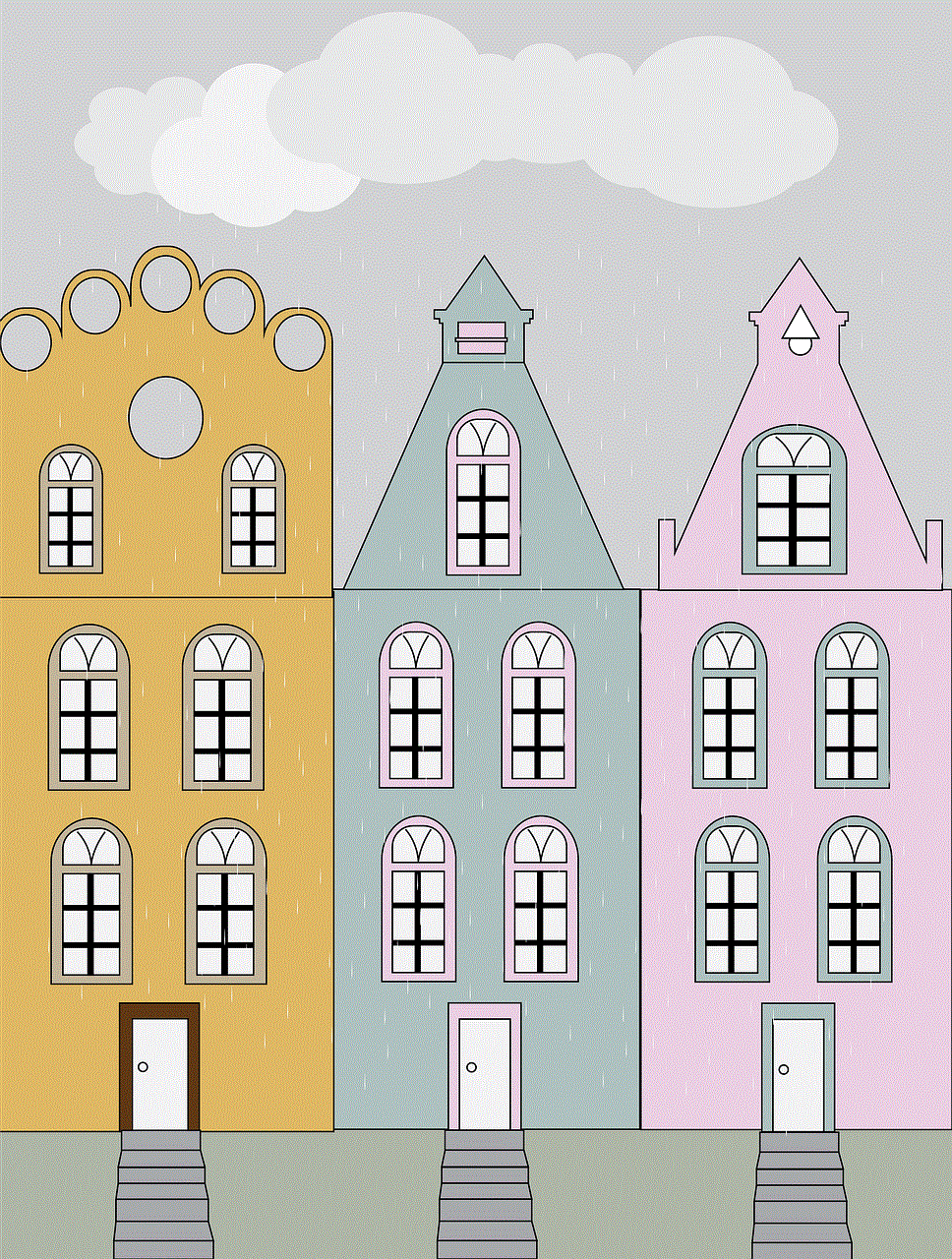screen lock for kids
In today’s digital age, children are exposed to technology at a very young age. From smartphones to tablets, kids are constantly surrounded by screens and all the content that comes with it. While technology can have many benefits for children, it is important for parents to also be aware of the potential dangers and take necessary precautions to protect their little ones. One such precaution is using a screen lock for kids.
A screen lock for kids is a feature that allows parents to restrict access to their child’s device. It can be a password, pattern, or even a fingerprint lock. This ensures that only the parent or guardian can unlock the device and access its content. This feature provides peace of mind for parents, knowing that their child cannot access inappropriate content or make unauthorized purchases on their device.
One of the main reasons why parents opt for a screen lock for kids is to protect them from the internet’s dark side. The internet is a vast and unregulated space, and children can easily stumble upon explicit or violent content while innocently browsing. With a screen lock in place, parents can control what their child has access to on their device. They can limit access to certain apps, websites, or even set a time limit for screen usage. This allows parents to monitor and regulate their child’s screen time, ensuring they are not exposed to harmful content.
Moreover, a screen lock for kids also protects them from cyber threats. Children are vulnerable targets for cybercriminals as they are often unaware of the dangers lurking online. With a screen lock, parents can prevent their child from accidentally clicking on a malicious link or downloading a harmful app. This not only protects their device from viruses but also protects their personal information from being compromised.
Another advantage of using a screen lock for kids is that it promotes responsible device usage. With the rise of social media and online gaming, children are spending more time than ever on their devices. This can lead to addiction, affecting their mental and physical health. By setting a screen time limit through a screen lock, parents can encourage their child to engage in other activities, such as outdoor play or reading, promoting a healthy balance.
Furthermore, a screen lock for kids can also come in handy when it comes to managing app purchases. Many children have access to their parent’s app store account, and with just a few clicks, they can make in-app purchases without their parent’s knowledge. This can result in unexpected and sometimes hefty bills for parents. By setting a screen lock, parents can prevent their child from making any purchases without their permission, avoiding any financial surprises.
Another feature of a screen lock for kids is the ability to track the device’s location. This is particularly useful for parents of young children who may wander off or for parents of older children who may not always communicate their whereabouts. With a screen lock, parents can easily track their child’s device and ensure their safety.
Moreover, a screen lock for kids also promotes a safe and healthy family environment. With a screen lock in place, children are less likely to argue or throw tantrums over their parents taking away their device. It sets boundaries and teaches children that there are times when screen usage is acceptable and times when it is not. This also allows for quality family time without the constant distraction of screens.
On the other hand, some may argue that using a screen lock for kids limits a child’s freedom and exploration. However, it is crucial to note that the internet is a vast and unregulated space, and children do not have the maturity to navigate it safely on their own. A screen lock does not hinder a child’s learning and growth; instead, it ensures that they do so in a safe and controlled environment.
In addition to a screen lock, parents should also educate their children about internet safety and responsible device usage. They should have an open and honest conversation with their child about the potential dangers of the internet and the importance of using devices responsibly. This will help children understand the reason behind the screen lock and promote trust between parents and children.
In conclusion, a screen lock for kids is an essential feature for parents to have control over their child’s device usage. It not only protects children from the dark side of the internet but also promotes responsible device usage and a healthy family environment. With the increasing use of technology in everyday life, it is crucial for parents to take necessary precautions to ensure their child’s safety and well-being. A screen lock for kids is just one of the many ways parents can protect their children in today’s digital world.
what does smh mean urban dictionary
SMH is a popular acronym that has taken the internet by storm. It is a commonly used term among millennials and Gen Z, but it has left many people scratching their heads and wondering, “what does SMH mean?” Well, fear not, because we are here to answer all your questions and shed light on this perplexing internet slang.
SMH stands for “shaking my head” or “shake my head” and is used to express disappointment, disapproval, or frustration. It is often used in response to something absurd, ridiculous, or unbelievable. This acronym has become an integral part of online communication, and its usage has spread like wildfire across various social media platforms, chat rooms, and text messages.
The term SMH is believed to have originated in the early 2000s, and its first appearance can be traced back to an online chat forum. It was initially used as an abbreviation for “scratching my head,” but over time, it has evolved to its current meaning. The term’s evolution can be attributed to the fluidity and ever-changing nature of internet slang.
Some people also use SMH to stand for “so much hate,” especially in a context where someone is expressing strong negative emotions towards a particular situation. However, this usage is not as widespread as the traditional meaning of the acronym.
The popularity of SMH can be attributed to the rise of text messaging and social media platforms. With the rise of smartphones, people have started to communicate more through text than in person. This shift in communication has led to the birth of various internet slang, including SMH. It is a quick and easy way to express one’s emotions without typing out a long sentence.
The internet has made the world a smaller place, and the usage of SMH is not limited to a specific country or region. It has become a global phenomenon, and people from all walks of life use it to express their thoughts and feelings. It has become a part of modern-day communication, and its usage is not limited to a particular age group either. From teenagers to adults, everyone seems to be using SMH to express themselves online.
The use of SMH is not limited to personal communication; it has also made its way into the world of memes. Memes are a popular form of online humor that often uses popular phrases and acronyms to convey a message. SMH has become a staple in meme culture, and a quick scroll through any social media platform will show you countless memes using this acronym.



One of the reasons behind SMH’s popularity is its versatility. It can be used in various situations, and its meaning can change depending on the context. For example, if someone shares a ridiculous or cringeworthy post on social media, one may respond with “SMH” to express their disapproval. On the other hand, if someone narrates a series of unfortunate events, one may use SMH to express their disbelief and disappointment.
Another reason for the term’s widespread usage is its brevity. With the rise of social media platforms like Twitter , where character limits are strict, people have started to use abbreviations and acronyms to convey their message. SMH is short, simple, and effective, making it a popular choice among internet users.
Furthermore, the rise of memes and viral videos has also contributed to SMH’s popularity. People use this acronym to react to funny, absurd, or outrageous content, making it a staple in online reactions and comments. It has become a part of internet culture, and its usage shows no signs of slowing down.
However, like any other internet slang, SMH has also faced its fair share of criticism. Some people argue that the overuse of this acronym has led to a decline in proper language usage and has made it difficult for people to express themselves effectively. It has also been criticized for promoting a culture of laziness and lack of effort in communication.
Moreover, the usage of SMH in certain contexts can also be seen as offensive and disrespectful. For example, using it to dismiss someone’s opinion or experience can come across as dismissive and insensitive. It is essential to use this acronym with caution and be mindful of its potential impact on others.
In conclusion, SMH is an acronym that has become an integral part of modern-day communication. Its widespread usage and popularity can be attributed to the rise of social media platforms and the need for quick and efficient communication. Despite its criticism, it has become a staple in online interactions and is here to stay. So, the next time you come across this acronym, you know exactly what it means – shaking my head in disbelief.
what is an rt
An RT, or retweet, is a feature on the popular social media platform Twitter that allows users to share and amplify the content of others. In simple terms, a retweet is when a user reposts a tweet from another user onto their own feed, giving credit to the original poster. This seemingly small feature has had a significant impact on the way information is shared and consumed on the internet. With over 330 million monthly active users, Twitter has become a powerful tool for spreading news, opinions, and ideas. In this article, we will delve deeper into the world of retweets, exploring its history, impact, and controversies.
The History of Retweets
The concept of retweeting can be traced back to the early days of Twitter. In the platform’s early years, users would manually copy and paste a tweet into their own feed, adding the letters “RT” before the original tweet to indicate that it was a retweet. This was a tedious and time-consuming process, and it wasn’t until 2009 that Twitter introduced the official retweet feature. The new feature allowed users to retweet with a single click, making it easier and faster to share content. This move was met with mixed reactions from users, with some praising the convenience, while others criticized it for taking away the personal touch of manually retweeting.
Over the years, retweets have evolved, with Twitter introducing new features to enhance the experience. In 2016, Twitter introduced the option to retweet with a comment, allowing users to add their own thoughts and opinions to the original tweet. This feature proved to be popular, with many users using it to engage in conversations and debates. Another significant change came in 2017 when Twitter doubled the character limit from 140 to 280, allowing for more detailed retweets. These updates have made retweeting a seamless and essential part of the Twitter experience.



The Impact of Retweets
Retweets have had a profound impact on the way information is shared and consumed on the internet. With the ability to reach millions of users in a matter of seconds, retweets have become a powerful tool for spreading news and opinions. It has allowed for the democratization of information, giving individuals and organizations the ability to have their voices heard on a global scale. This has been particularly beneficial for marginalized communities and underrepresented groups who have used Twitter to raise awareness and advocate for their causes.
Retweets have also played a significant role in shaping public opinion. With the rise of social media influencers and celebrities, retweets have become a way to endorse products, services, and political views. This has given individuals and organizations a platform to influence and sway public sentiment, for better or for worse. The impact of retweets on political discourse has been particularly controversial, with some arguing that it has led to the spread of misinformation and the polarization of society.
The Controversies Surrounding Retweets
While retweets have undoubtedly had a positive impact, they have also been at the center of several controversies. One of the most significant controversies surrounding retweets is the spread of false information. With the ease of retweeting, it has become effortless for fake news and conspiracy theories to go viral. This has had real-world consequences, with misinformation about elections, health, and other critical issues leading to confusion and harm.
Another issue with retweeting is the lack of accountability. Unlike original tweets, retweets do not have any attribution or context. This has led to instances where users have been retweeted out of context, leading to misunderstandings and sometimes even harassment. Additionally, the anonymity of retweets has made it easier for trolls and hate speech to spread, with little to no consequences for the retweeter.
The Future of Retweets
As Twitter continues to evolve, so do retweets. The platform has introduced several features in recent years to address some of the controversies surrounding retweets. In 2020, Twitter added a prompt to encourage users to read an article before retweeting it, aiming to combat the spread of misinformation. They have also introduced labels to identify manipulated media and fact-checking information. These measures, while not perfect, show that Twitter is aware of the impact of retweets and is taking steps to address them.
In addition, Twitter has also been experimenting with the option to disable retweets on individual tweets. This feature allows users to limit the reach of their tweets, preventing them from being retweeted. This has been particularly useful for individuals who want to share personal or sensitive information with a select group of people without it being amplified to the entire Twitterverse.
Conclusion



In conclusion, retweets have become an integral part of the Twitter experience, shaping the way we share and consume information. From its humble beginnings as a manual process to the powerful feature it is today, retweets have had a significant impact on society. While it has its fair share of controversies, it has also allowed for the democratization of information and given a voice to the marginalized. As Twitter continues to evolve, it will be interesting to see how retweets will continue to shape the platform and the world around us.